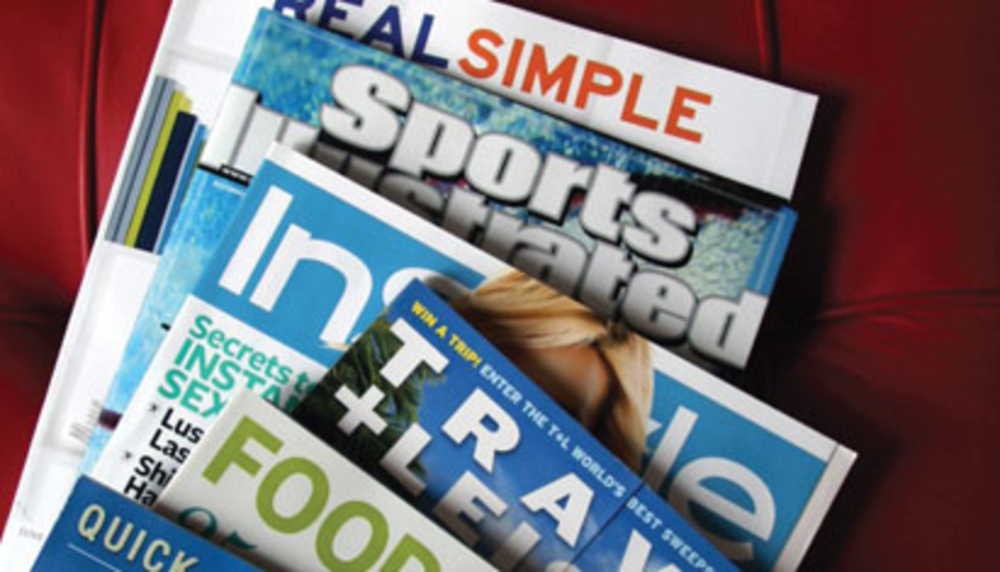One of the newer applications for digital print is in the beleaguered magazine and newspaper publishing segments, where both circulation rates and advertising revenues have taken a dive. Publishers seek new ways to deliver content that are more efficient than traditional mass-produced printed products, and digital print — with its ability to manipulate text and images for a personalized consumer experience — is gaining traction. The venue also enables publishers to customize both editorial content and ads.
Time Inc., along with American Express Publishing and Lexus, tested a customized magazine called Mine in March. Recipients of Mine were able to influence the content and the ads that appear in each issue. They also chose the delivery mechanism: print, online or smartphone. Content was drawn from Time Inc. magazines.
Examples of recent customized magazine covers range from putting the recipient’s name on the cover to allowing them to upload their own image, but Mine allows consumers to influence content across an entire publication.
Wayne Powers, president of Time Inc. Media Group, said customization, “strengthens our relationships with advertisers and consumers.”
At the Mine Web site, consumers choose which of eight different Time Inc. magazines they want to read. They also answer questions about their interests to help customize the ads, Time has a technology platform that aggregates content from the magazines chosen.
“There was a lot of development work done on our side to create the distribution mechanism,” said Powers.
The printed version of Mine was distributed to 31,000 consumers every two weeks. While there are no other customization projects at the press currently, Powers insists the idea has legs.
A customized magazine like Mine “can work under a lot of different scenarios,” he says. “It can be designed for a new product” and the content “might be more aligned with the interests of the consumer.”
Early results from Mine show that recipients spent 45 to 46 minutes with the 36-page printed product. This is equal to the amount of time consumers typically spend with a 75-page to 100-page newsweekly, Powers says.
It is too early to tell whether this sector will grow. “Everybody is trying to figure out the economic model and the end-user experience,” says John Conley, VP, publishing at Xerox’s global business group.
One of the issues publishers face is cost, says Conley: “It is going to be expensive.” In addition, publishers either need to know enough about their subscribers via a sophisticated CRM platform or they need to be able to give end users the ability to build content themselves.
“The user experience has to be very simple but very robust – that is a bigger issue today than the actual printing,” says Alon Bar-Shany, VP and GM of the Indigo press division for HP’s graphics solution business.
While the software to build these publications is already available and digital presses can handle this work, finishing is still an issue. Once these customized publications come off the presses, they need to be assembled precisely so that the pages for each recipient stay together.
“To really enable mass customization, you need to be able to customize the finishing as well,” says Bar-Shany. “People are working on this, but there is currently still a lot of manual work done on the finishing side.”
Other media companies are exploring customization as well. The Tribune Co., which publishes the Chicago Tribune, Los Angeles Times and operates several Web sites and local TV stations, sees potential in customization, says Paul Lynch, manager, commercial sales and logistics, at the Chicago Tribune. The goal is to leverage Tribune’s assets – which include content, customer data, a distribution network and relationships with marketers – “to create customized products that consumers and advertisers will be willing to pay for,” he continued.
The company is using digital technology to improve efficiency and give consumers control over content. Trib Local is a digital product that uses the Web to gather content and printers to create and distribute it. It was launched to reach local markets in an economically feasible manner. Using Kodak’s reverse publishing software, Tribune Co. created a Web platform enabling members of each local community to upload articles and photos. Advertisers were able to pick a display ad template, add a headline and body text and pay for it with a credit card. The content is automatically aggregated and laid out into templates for specific community products and electronically sent to the printer. There are now 80 Trib Local community Web sites and 19 distinct print products. Each print version represents 3 or 4 towns.
“Most people think the Web will kill print, but Trib Local is an example of the Web driving print,” says Lynch.







